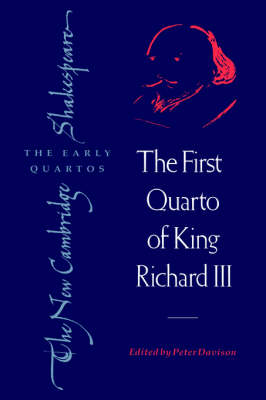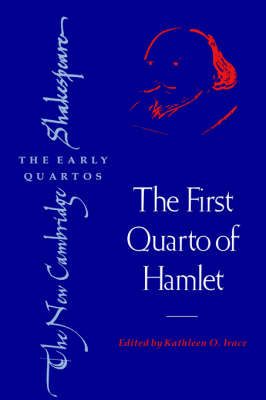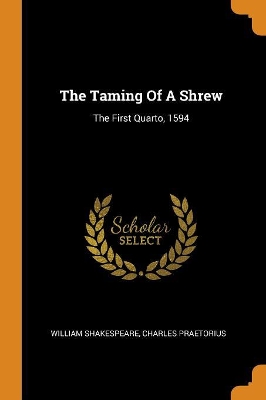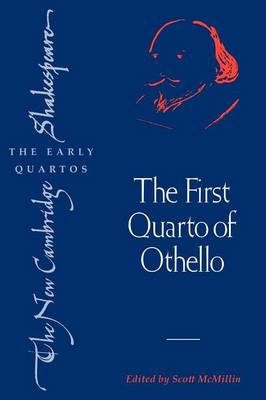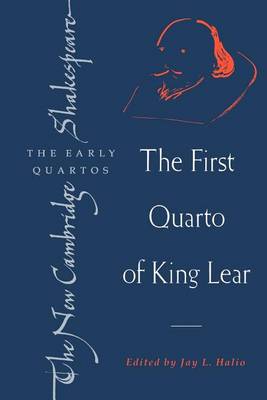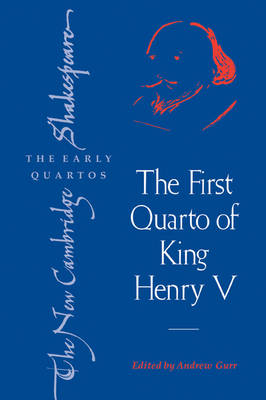The New Cambridge Shakespeare: The Early Quartos
6 total works
Shakespeare's Richard III presents difficult textual problems. There are 2,000 verbal differences between the text of the first quarto (1597) and the version in the First Folio (1623). Although the narrative of the two plays is virtually identical, each has lines which are not found in the other, parts of the play are arranged differently, and the quarto deploys fewer characters. The text of the quarto is accompanied by a collation of variant readings and substantial textual notes. In a lengthy introduction Peter Davison proposes that Shakespeare's company, the Lord Chamberlain's Men, used a memorially reconstructed text of Richard III during a touring performance of the play, and that text provided the manuscript for the 1597 quarto. Using examples of touring practice of the past 400 years, Davison shows how the actors' involvement helped to produce the text we have.
The first quarto of Hamlet is radically different from the second quarto and Folio versions of the play, and about half their length. But despite its uneven verbal texture and simpler characterisation, the first quarto presents its own workable alternatives to the longer texts, reordering and combining key plot elements, and even including a unique scene between Horatio and the Queen. This new critical edition is designed for students, scholars and actors who are intrigued by the first printed text of Shakespeare's Hamlet. Although the first quarto has been reprinted many times, there is no other modernised edition in print. Irace's introduction outlines views of its origins, its special features, and its surprisingly rich performance history; her textual notes point out differences between the first quarto and the longer second quarto and Folio versions and offer alternatives which actors or directors might choose for specific productions.
This is a modernized edition of an anonymous play, long known to scholars, which appears to be an alternative version of Shakespeare's popular comedy, The Taming of the Shrew. Stephen Miller suggests that an anonymous person rewrote Shakespeare's more complicated version, making it shorter, simpler and different in some ways. The main difference between the two plays concerns the framing story of Christopher Sly, the drunk, who disappears early on in Shakespeare's version. A Shrew, as it is usually known, contains additional material for Sly which is familiar to playgoers because it is often included in productions of Shakespeare's play. The Taming of a Shrew, The 1594 Quarto, provides a modernized text based upon a re-examination of the quarto and extensive commentary. Miller's introduction establishes a direct link between A Shrew and The Shrew and includes an illustrated stage history.
This 2001 book presents the first modernized and edited version of the 1622 Othello. By taking this earliest published version of Othello as a book in its own right, Scott McMillin accounts for the mystery of its thousands of differences from the Folio version by arguing that the Quarto was printed from a theatre script reflecting cuts and actors' interpolations made in the playhouse. McMillin explains that the playhouse script was apparently taken from dictation by a scribe listening to the actors themselves, and thus reveals how Othello was spoken in seventeenth-century performance. This edition, which consists of a detailed introduction, quarto text, select collation and textual notes, is an important book for scholars in Shakespeare and Elizabethan-Jacobean drama, with wide ramifications for other Shakespeare textual studies and for students of early theatre history.
This edition of King Lear is based on the first (1608) quarto and represents a significantly different version from that published in the Folio of 1623, which forms the basis of the standard New Cambridge Shakespeare edition. Most scholars now believe that the quarto derives from what was probably Shakespeare's own autograph draft of the play, whereas the Folio derives from a late, revised copy used as the prompt-book. Each has numerous unique passages and hundreds of variant readings, creating differences which affect the structure, characterisation and overall impact of the play. This volume contains a substantial introduction, the text of the first quarto and a collation of variant readings from the second quarto and the First Folio. Passages unique to the Folio are printed separately in an appendix.
The Quarto text of Henry V is of unique importance. It is the first and probably the only text of a Shakespeare play which provides the playscript corresponding to the version that was actually performed by Shakespeare's own company. It has the authority of being transcribed by actors in the company as a record of their original staging at the Globe in 1599. The quarto version differs radically from the First Folio text which is used as the source for all other editions. Half as long as the Folio, it represents a practical staging text that streamlined the script supplied by Shakespeare. This edition of the Henry V quarto provides a modernized text alongside the extensive commentary. Andrew Gurr examines each variant from the Folio text in detail, shedding new light on what happened to scripts that the Shakespeare company bought from their resident playwright.
